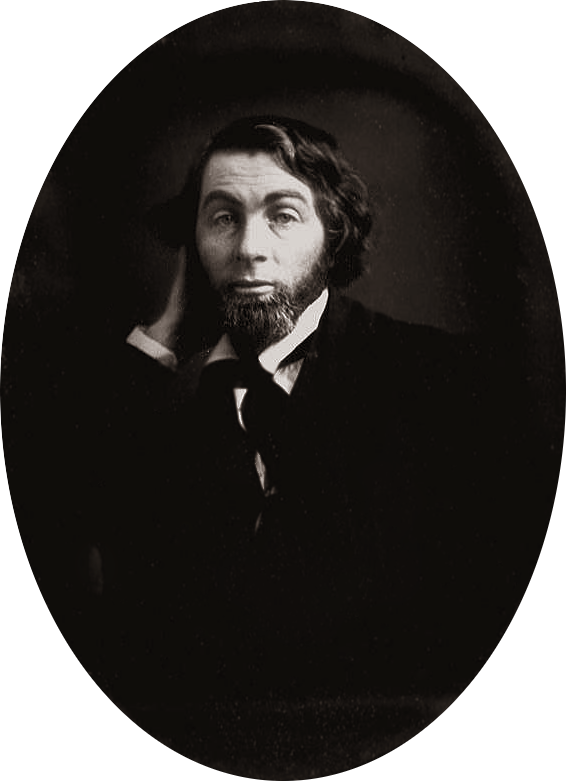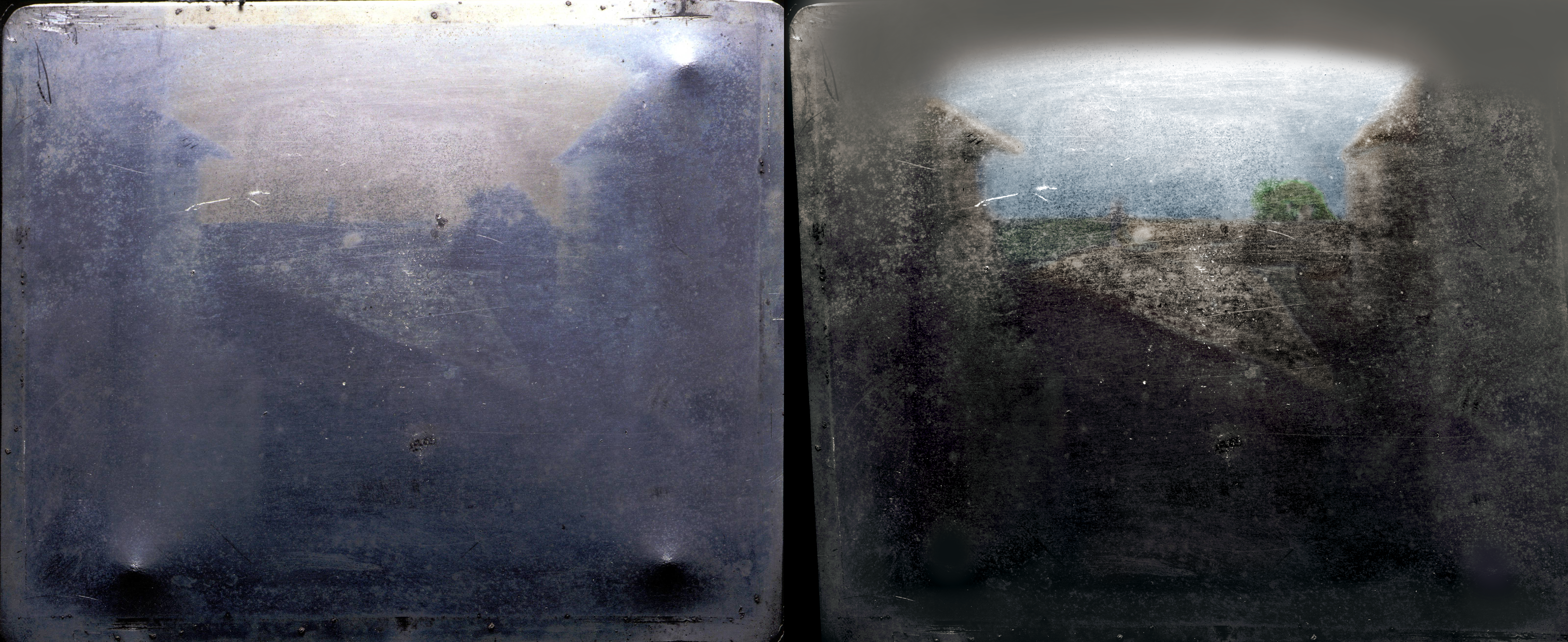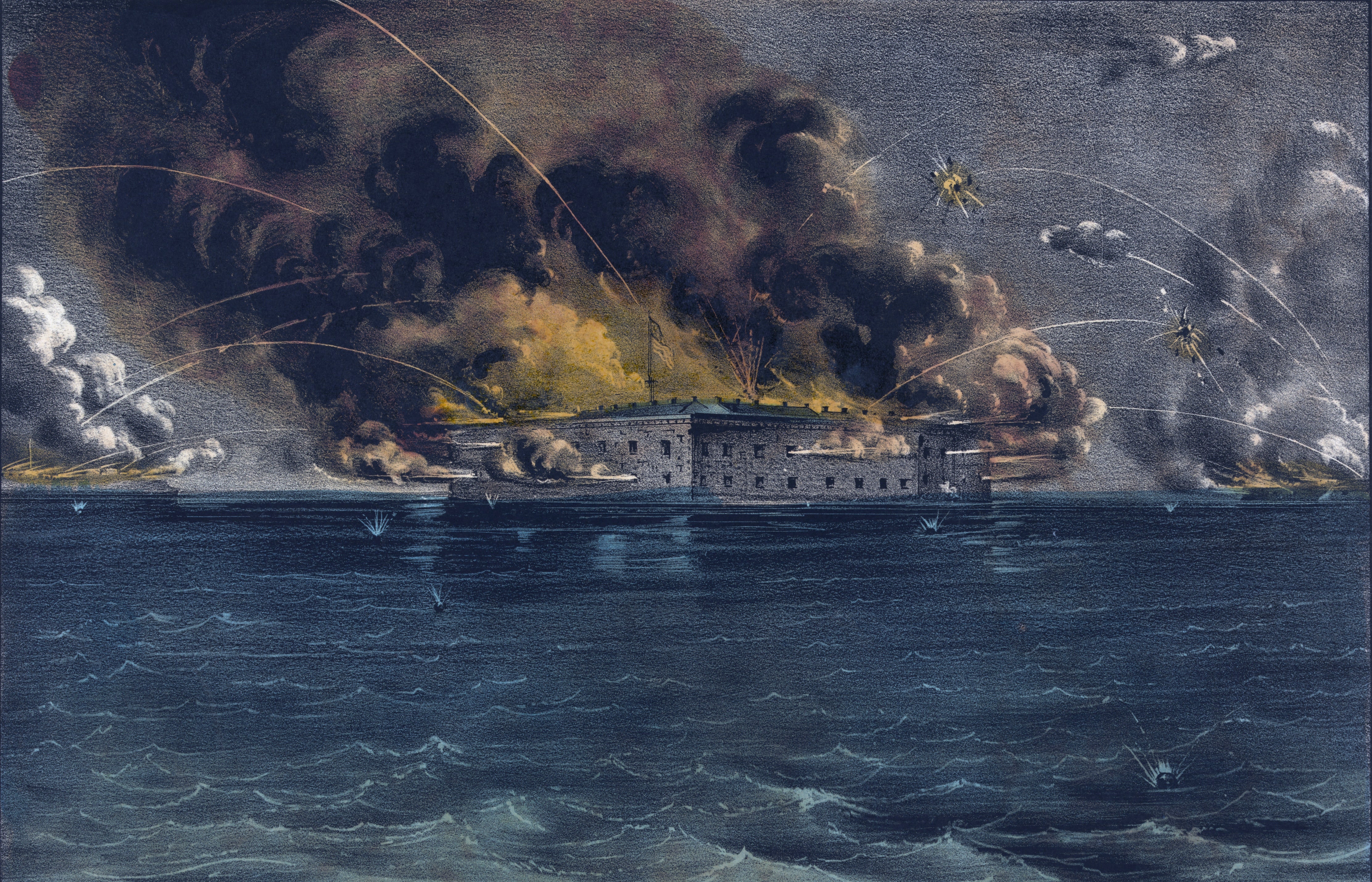|
Drum-Taps
''Drum-Taps'', first published in 1865, is a collection of poetry written by American poet Walt Whitman during the American Civil War. 18 additional poems were added later in the year to create '' Sequel to Drum-Taps''. History Creating the publication On April 12, 1861, Confederate cannons fired upon Fort Sumter signaling the opening of the American Civil War. Consequently, this would also mark the beginning of a very important time in the life of American poet Walt Whitman. Whitman's style of writing drew from his attempts to better manage the psychological chaos he experienced. As the nation began to dramatically shift, so did Whitman. His poetry during this time would begin to demonstrate his vision of democracy as people acting collectively and pragmatically to secure a meaningful political freedom. Regarding many of the poems in ''Drum-Taps'', little is known about when they were actually written. However, in the winter of 1862, Whitman traveled to Virginia in search of ... [...More Info...] [...Related Items...] OR: [Wikipedia] [Google] [Baidu] |
When Lilacs Last In The Dooryard Bloom'd
"When Lilacs Last in the Dooryard Bloom'd" is a long poem written by American poet Walt Whitman (1819–1892) as an elegy to President Abraham Lincoln. It was written in the summer of 1865 during a period of profound national mourning in the aftermath of the president's assassination on 14 April of that year. The poem, written in free verse in 206 lines, uses many of the literary techniques associated with the pastoral elegy. Despite being an expression to the fallen president, Whitman neither mentions Lincoln by name nor discusses the circumstances of his death in the poem. Instead, he uses a series of rural and natural imagery including the symbols of the lilacs, a drooping star in the western sky (Venus), and the hermit thrush, and he employs the traditional progression of the pastoral elegy in moving from grief toward an acceptance and knowledge of death. The poem also addresses the pity of war through imagery vaguely referencing the American Civil War (1861–1865), which ... [...More Info...] [...Related Items...] OR: [Wikipedia] [Google] [Baidu] |
Sequel To Drum-Taps
''Sequel to Drum-Taps'': ''When Lilacs Last in the Dooryard Bloom'd and other poems'' is a collection of eighteen poems written and published by American poet Walt Whitman in 1865. Most of the poems in the collection reflect on the American Civil War (1861–1865), including the elegies "When Lilacs Last in the Dooryard Bloom'd" and " O Captain! My Captain!", which were written in response to the 1865 assassination of Abraham Lincoln. The poems of this book were later included in ''Leaves of Grass'', Whitman's comprehensive collection of his poetry that was frequently expanded throughout his life. Background At the start of the American Civil War (1861–1865), Whitman moved from New York City to Washington, D.C. where he obtained work in a series of government offices, at first with the Army Paymaster's Office and later with the Bureau of Indian Affairs. Callow, Philip. 1992. ''From Noon to Starry Night: A Life of Walt Whitman''. Chicago: Ivan R. Dee. p. 293.Loving, Jerome. ''W ... [...More Info...] [...Related Items...] OR: [Wikipedia] [Google] [Baidu] |
Leaves Of Grass
''Leaves of Grass'' is a poetry collection by American poet Walt Whitman. Though it was first published in 1855, Whitman spent most of his professional life writing and rewriting ''Leaves of Grass'', revising it multiple times until his death. There have been held to be either six or nine individual editions of ''Leaves of Grass'', the count varying depending on how they are distinguished. This resulted in vastly different editions over four decades—the first edition being a small book of twelve poems, and the last, a compilation of over 400. The collection of loosely connected poems represents the celebration of his philosophy of life and humanity and praises nature and the individual human's role in it. Rather than focusing on religious or spiritual matters, ''Leaves of Grass'' focuses primarily on the body and the material world. With one exception, its poems do not rhyme or follow standard rules for meter and line length. ''Leaves of Grass'' is regarded by many scholars ... [...More Info...] [...Related Items...] OR: [Wikipedia] [Google] [Baidu] |
Walt Whitman
Walter Whitman (; May 31, 1819 – March 26, 1892) was an American poet, essayist and journalist. A humanist, he was a part of the transition between transcendentalism and realism, incorporating both views in his works. Whitman is among the most influential poets in the American canon, often called the father of free verse. His work was controversial in his time, particularly his 1855 poetry collection ''Leaves of Grass'', which was described as obscene for its overt sensuality. Born in Huntington on Long Island, Whitman resided in Brooklyn as a child and through much of his career. At the age of 11, he left formal schooling to go to work. Later, Whitman worked as a journalist, a teacher, and a government clerk. Whitman's major poetry collection, ''Leaves of Grass'', was first published in 1855 with his own money and became well known. The work was an attempt at reaching out to the common person with an American epic. He continued expanding and revising it until his de ... [...More Info...] [...Related Items...] OR: [Wikipedia] [Google] [Baidu] |
Journalist
A journalist is an individual that collects/gathers information in form of text, audio, or pictures, processes them into a news-worthy form, and disseminates it to the public. The act or process mainly done by the journalist is called journalism. Roles Journalists can be broadcast, print, advertising, and public relations personnel, and, depending on the form of journalism, the term ''journalist'' may also include various categories of individuals as per the roles they play in the process. This includes reporters, correspondents, citizen journalists, editors, editorial-writers, columnists, and visual journalists, such as photojournalists (journalists who use the medium of photography). A reporter is a type of journalist who researches, writes and reports on information in order to present using sources. This may entail conducting interviews, information-gathering and/or writing articles. Reporters may split their time between working in a newsroom, or from home, and going ou ... [...More Info...] [...Related Items...] OR: [Wikipedia] [Google] [Baidu] |
New York And New Jersey Campaign
The New York and New Jersey campaign in 1776 and the winter months of 1777 was a series of American Revolutionary War battles for control of the Port of New York and New Jersey, Port of New York and the state of New Jersey, fought between Kingdom of Great Britain, British forces under William Howe, 5th Viscount Howe, General Sir William Howe and the Continental Army under General George Washington. Howe was successful in driving Washington out of New York, but overextended his reach into New Jersey, and ended the active campaign season in January 1777 with only a few outposts near the city. The British held New York Harbor for the rest of the war, using it as a base for expeditions against other targets. Landing unopposed on Staten Island on July 3, 1776, Howe had assembled an army composed of elements that had been withdrawn from Boston in March following their Boston campaign, failure to hold that city, combined with additional British troops, as well as Hessian (soldier), Hes ... [...More Info...] [...Related Items...] OR: [Wikipedia] [Google] [Baidu] |
American Revolutionary War
The American Revolutionary War (April 19, 1775 – September 3, 1783), also known as the Revolutionary War or American War of Independence, was a major war of the American Revolution. Widely considered as the war that secured the independence of the United States, fighting began on April 19, 1775, followed by the Lee Resolution on July 2, 1776, and the Declaration of Independence on July 4, 1776. The American Patriots were supported by the Kingdom of France and, to a lesser extent, the Dutch Republic and the Spanish Empire, in a conflict taking place in North America, the Caribbean, and the Atlantic Ocean. Established by royal charter in the 17th and 18th centuries, the American colonies were largely autonomous in domestic affairs and commercially prosperous, trading with Britain and its Caribbean colonies, as well as other European powers via their Caribbean entrepôts. After British victory over the French in the Seven Years' War in 1763, tensions between the motherland and he ... [...More Info...] [...Related Items...] OR: [Wikipedia] [Google] [Baidu] |
History Of Photography
The history of photography began in remote antiquity with the discovery of two critical principles: camera obscura image projection and the observation that some substances are visibly altered by exposure to light. There are no artifacts or descriptions that indicate any attempt to capture images with light sensitive materials prior to the 18th century. Around 1717, Johann Heinrich Schulze captured cut-out letters on a bottle of a light-sensitive slurry, but he apparently never thought of making the results durable. Around 1800, Thomas Wedgwood made the first reliably documented, although unsuccessful attempt at capturing camera images in permanent form. His experiments did produce detailed photograms, but Wedgwood and his associate Humphry Davy found no way to fix these images. In 1826, Nicéphore Niépce first managed to fix an image that was captured with a camera, but at least eight hours or even several days of exposure in the camera were required and the earliest resul ... [...More Info...] [...Related Items...] OR: [Wikipedia] [Google] [Baidu] |
Origins Of The American Civil War
Historians who debate the origins of the American Civil War focus on the reasons that seven Southern states (followed by four other states after the onset of the war) declared their secession from the United States (the Union) and united to form the Confederate States (known as the "Confederacy"), and the reasons that the North refused to let them go. Proponents of the pseudo-historical Lost Cause ideology have denied that slavery was the principal cause of the secession. While historians in the 21st century agree on the centrality of the conflict over slavery—it was not just "a cause" of the war but "the cause"—they disagree sharply on which aspects of this conflict (ideological, economic, political, or social) were most important. The principal political battle leading to Southern secession was over whether slavery would be permitted to expand into newly acquired Western territories destined to become states. Initially Congress had admitted new states into the Union ... [...More Info...] [...Related Items...] OR: [Wikipedia] [Google] [Baidu] |
Book Cover
A book cover is any protective covering used to bind together the pages of a book. Beyond the familiar distinction between hardcovers and paperbacks, there are further alternatives and additions, such as dust jackets, ring-binding, and older forms such as the nineteenth-century "paper-boards" and the traditional types of bookbinding, hand-binding. The term "Bookcover" is often used for a book cover image in library management software. This article is concerned with modern mechanically produced covers. History Before the early nineteenth century, books were hand-bound, in the case of luxury medieval manuscripts in treasure bindings using materials such as gold, silver and jewels. For hundreds of years, book bindings had functioned as a protective device for the expensively printed or hand-made pages, and as a decorative tribute to their cultural authority. In the 1820s great changes began to occur in how a book might be covered, with the gradual introduction of techniques for ... [...More Info...] [...Related Items...] OR: [Wikipedia] [Google] [Baidu] |
Free Verse
Free verse is an open form of poetry, which in its modern form arose through the French ''vers libre'' form. It does not use consistent meter patterns, rhyme, or any musical pattern. It thus tends to follow the rhythm of natural speech. Definition Free verse does not "proceed by a strict set of rules … is not a literary type, and does not conform to a formal structure." It is not considered to be completely free. In 1948, Charles Allen wrote, "The only freedom cadenced verse obtains is a limited freedom from the tight demands of the metered line." Free verse contains some elements of form, including the poetic line, which may vary freely; rhythm; strophes or strophic rhythms; stanzaic patterns and rhythmic units or cadences. It is said that verse is free "when it is not primarily obtained by the metered line." Donald Hall goes as far as to say that "the ''form'' of free verse is as binding and as liberating as the ''form'' of a rondeau," and T. S. Eliot wrote, "No verse is fr ... [...More Info...] [...Related Items...] OR: [Wikipedia] [Google] [Baidu] |
George Washington
George Washington (February 22, 1732, 1799) was an American military officer, statesman, and Founding Father who served as the first president of the United States from 1789 to 1797. Appointed by the Continental Congress as commander of the Continental Army, Washington led the Patriot forces to victory in the American Revolutionary War and served as the president of the Constitutional Convention of 1787, which created the Constitution of the United States and the American federal government. Washington has been called the " Father of his Country" for his manifold leadership in the formative days of the country. Washington's first public office was serving as the official surveyor of Culpeper County, Virginia, from 1749 to 1750. Subsequently, he received his first military training (as well as a command with the Virginia Regiment) during the French and Indian War. He was later elected to the Virginia House of Burgesses and was named a delegate to the Continental Congress ... [...More Info...] [...Related Items...] OR: [Wikipedia] [Google] [Baidu] |


_-_1883_-_Engraving.jpg)

.jpg)




